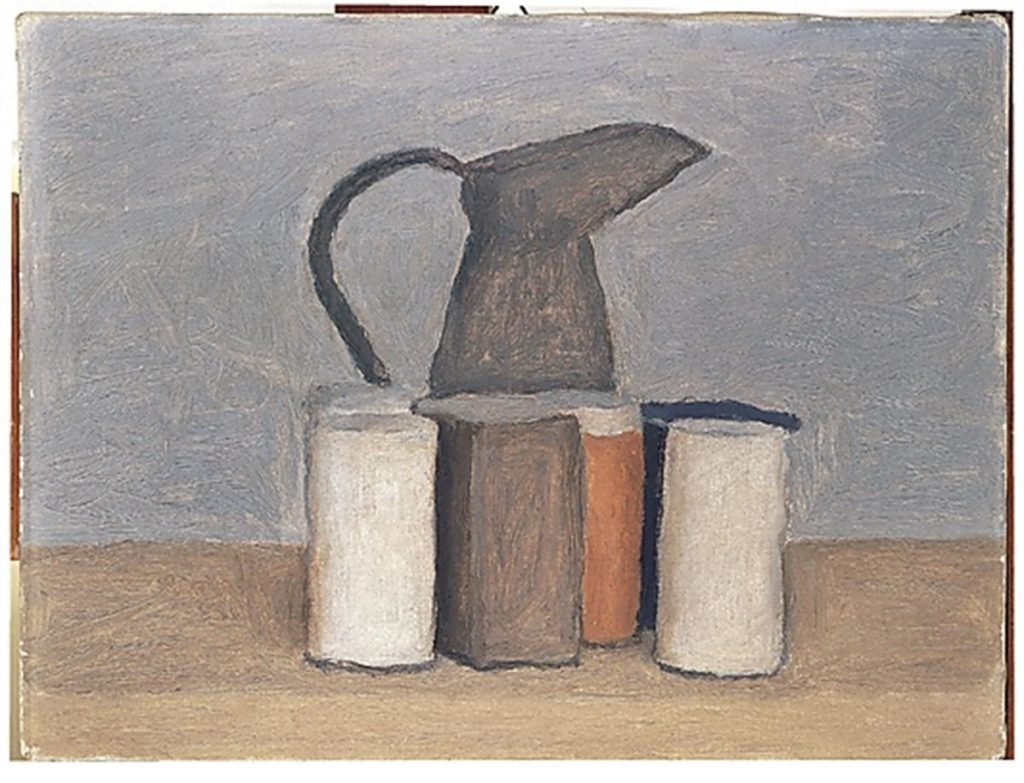From Intermediate Drawing with Neil Bender and Ellen Mueller, spring 2009

(Morandi – credit)
In class, we have been working on a complex still-life involving many objects of varying scales and textures, concentrating on value to make the space of, around, and in-between objects feel real.
Giorgio Morandi is a 20th century Italian painter who is noted for his obsessive paintings of bottles, jars, pitchers, cups and various mundane and sparse items. However, Morandi arranged and depicted these items in profound ways, through placement, handling, and his point of view. He often defies the logic of the standard still-life to blur the lines between objects and confound the viewer’s logic, or there ideas of how these objects should physically relate to each other.
You will be doing your best Morandi (conceptually more than stylistically) with objects from your own room/house/apartment/space. Arrange still-lifes in your space (on the table or floor) and play upon visual cues (where edges meet, the value relationships of one object next to each other, the tension of negative space, etc.) to create a dynamic and confounding composition. Look at Morandis for subtle cues and ‘inspiration’.
You will make a minimum of 2 Moleskeine sketchbook drawings with your Micron or Staetlder pigment liners; (one vertical, one horizontal) using Morandi’s style of crosshatching to build the forms and their relationships (less hatching, thinner lines, more open where you want light areas; higher volume of lines, and layering of lines for darker areas).
You will then execute one final drawing in charcoal on 18 x 24 white drawing paper. Here you will be able to get softer, more atmospheric effects unavailable in the hatching/pen method.
Use the same objects for all 3 images, but reconfigure them in each drawing … change your point-of-view, or the placement of the objects on the page. DUE ____